Shares🔗
Docspell has a thought-out share feature that allows you to create read-only views to a subset of your documents and create a public but not-guessable link to it.
Concept🔗
A share is a cryptic share id that maps to a query. A share can be accessed via a public link that contains the share id.
Everyone who has this link can access all documents resulting from the query and their metadata.
To further protect this link, a password can be specified which should be distributed via a different channel than the link. If a password is defined for a share, it is required to access the items. Otherwise, the share id is all that's needed.
A share also requires to set a publication end date as a protection for leaving links available forever. Of course, you can explicitely set it to a very far away date should you really want it.
The query is executed under the user who created the share. Thus it returns all the items the user can see. This is important when you have folders that are only visible to you. If you don't want to share certain items, you must alter the query accordingly.
Given the nature of a query, there are two kinds of shares possible:
dynamic and static ones. A dynamic share uses a query that may yield
different results over time, for example tag:invoice. A static query
is a query that explicitely selects items by their id. This means the
latter will always result in the selected items (except if one of them
is deleted); whereas the former query could return different results
each time it is executed, because new documents could have been added
in the meantime that now match the criteria (like tagged with
invoice in the example).
A share can be enabled and disabled to quickly make it available or hidden.
Use Cases🔗
A useful application for shares is to have a simple view to documents
that are not sensible, like manuals. You could create a share for all
your manuals, for example using tags tags:manual and bookmark it.
Another use case is to share sensible documents with a partner who needs access to it, for example if you want to share all your tax documents with the company/person who helps you with doing you tax submission.
Limitations🔗
Currently, shares that contain fulltext search queries are not supported. The query for a share must not use any fulltext search.
Creating shares🔗
There are the following ways to create a share:
- From the search page: enter a query or use the search menu and then click the share button to share the resulting documents. This usually creates a dynamic share.
- From selecting items: In the search view, click Select Mode and select a few items. Then click the share button to share exactly these items. This will create a static share.
- By creating it manually: You can also go to Collective Profile and create a new share using the provided form.
Once you created the share, you can copy the url or send it via e-mail (requires to have e-mail settings defined).
Creating from search results🔗
When at the search page, add some criteria until you have the results
you want to publish. In the screenshot below all items with tag
Manual are selected. Then click the Share Results item in the
menu.


A form appears that lets you edit the query and set some properties.
The query is taken from the search page and may look a bit strange. It
will use ids rather than names, which makes the query a bit more
robust. For example: the query tag=manual also works, but should you
rename the tag, the share won't work anymore. By using ids as in
tag.id=4AUye…, the query is immune to renamings.
A name can be given to make it better distinguishable from other shares. Then a password and the Publish Until date can be set. The Publish Until date is mandatory. You can set it to something very far away to have shares exist "forever".
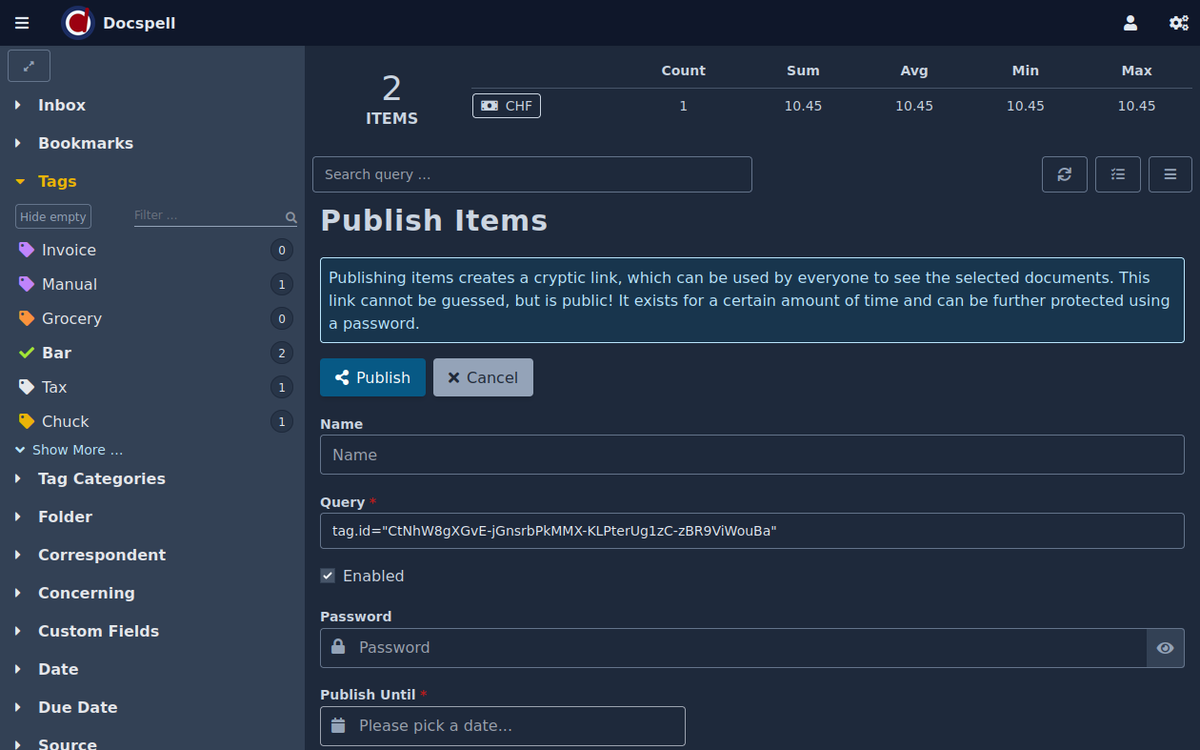

Clicking Cancel brings you back to the search results. If you are satifsied, click Publish. The next screen allows you to inspect your new share and to copy the url and/or send an e-mail. The email form is prefilled with some template that contains the link, so you don't need to copy it.

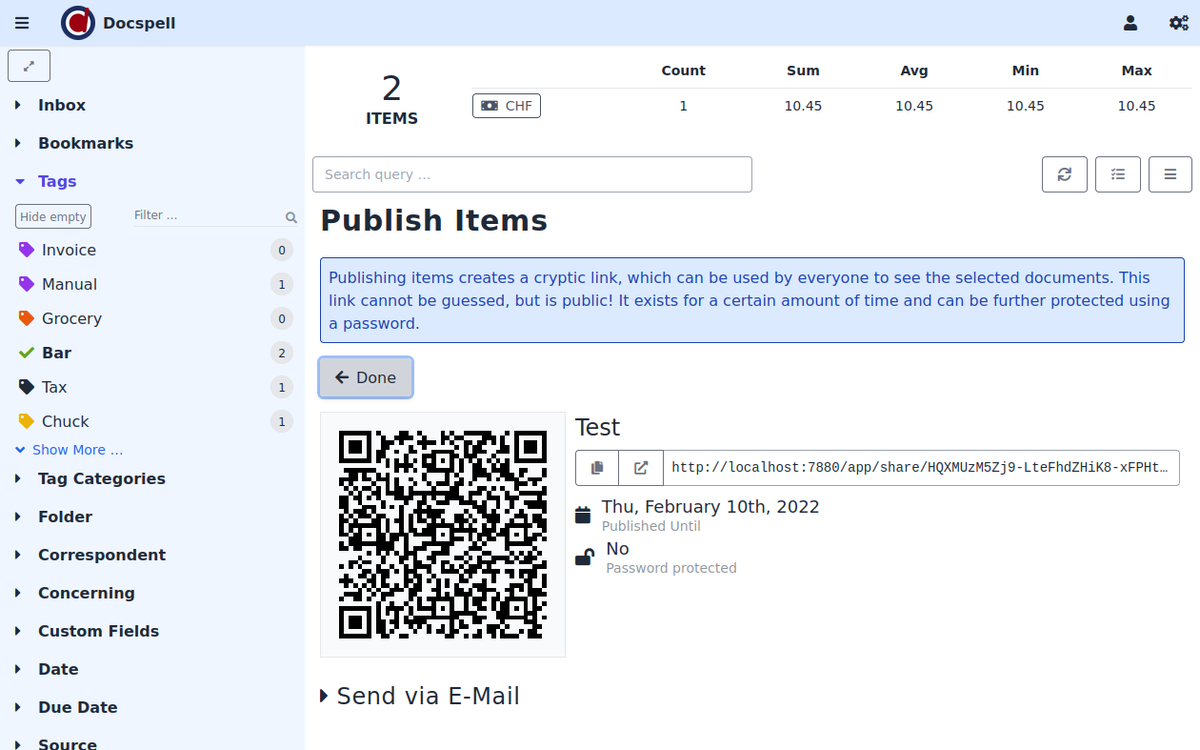
When typing in an e-mail address, there are completion proposals provided from your address book. If you type in an arbitrary address (not in the proposals), hit Enter or Space in order to add the current address. You can hit Backspace two times to remove the last e-mail address.
The new share can now be found in Collective Profile -> Shares and is also added to the Bookmarks section in the search menu. Clicking Done brings you back to the search results.
Creating from selecting items🔗
Creating a share for a hand picked set of items is almost the same as the above. In the search page, go to Select Mode and select some items.
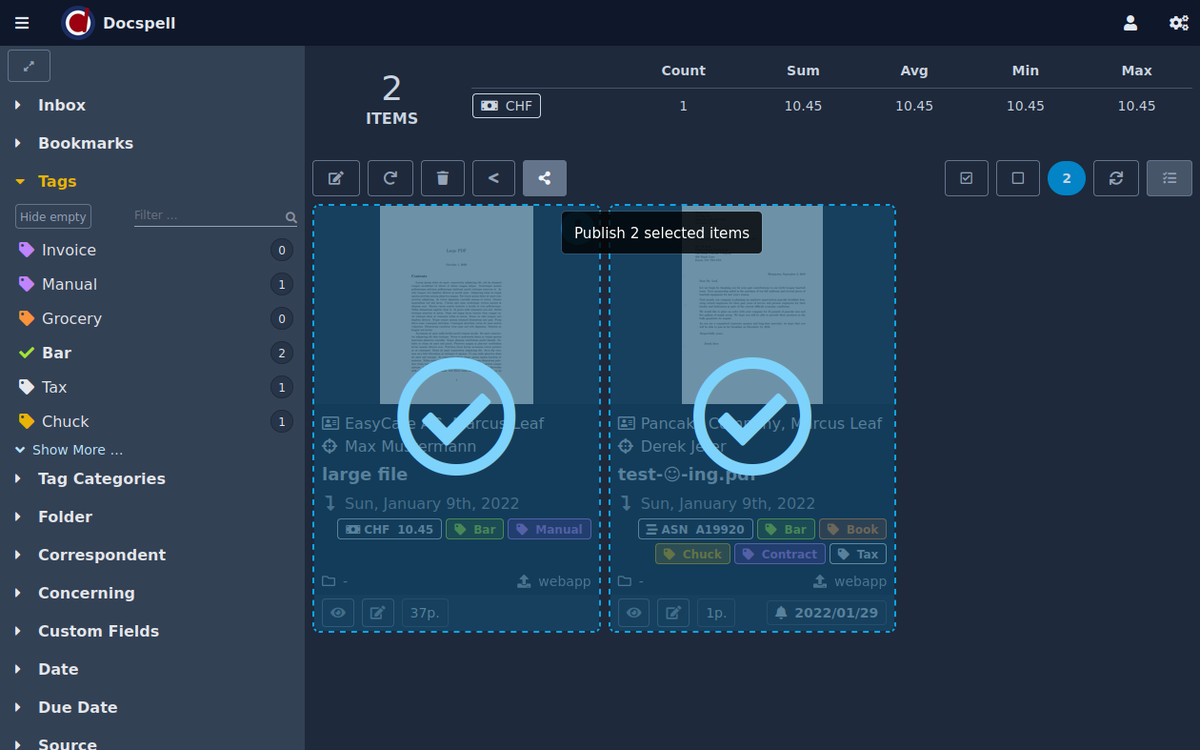

Then click the Share button and follow the same process as described
above. The query selects now exactly the picked items like in
id~=AhVX…,FG65Xy….
Creating manually🔗
At Collective Profile -> Shares there is a New share button, which will present a form where you can create a share. The query must then be filled manually (there is some syntax help). It is the same query as in the "power search" bar, as described here.
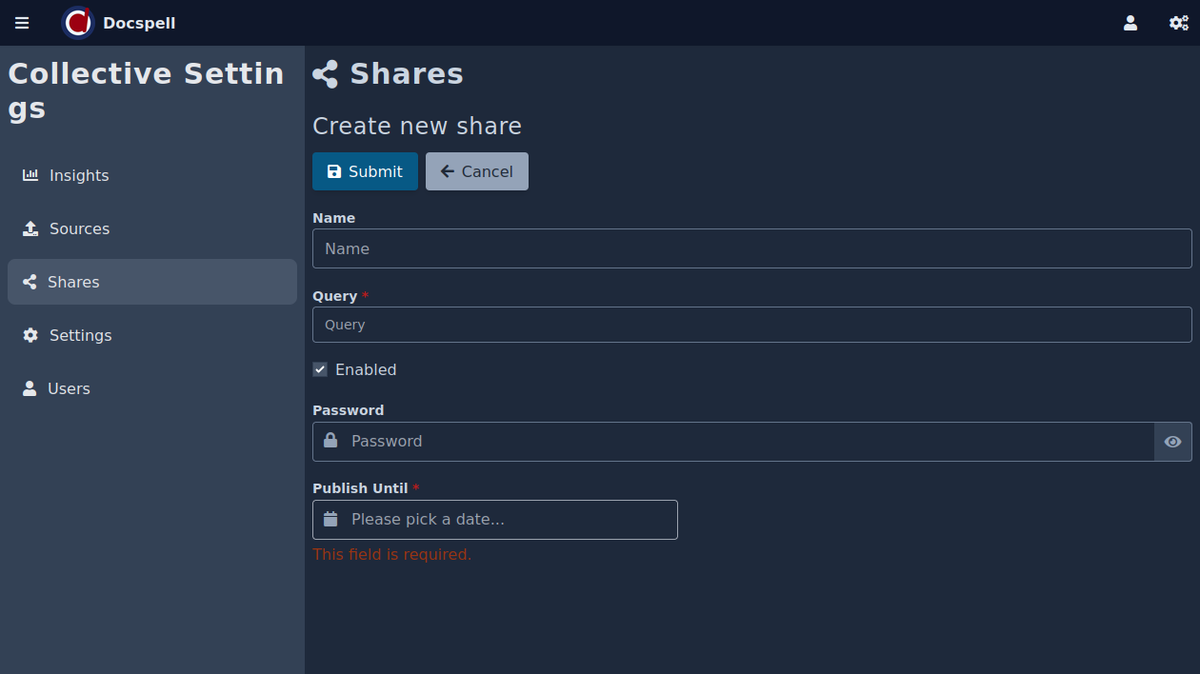
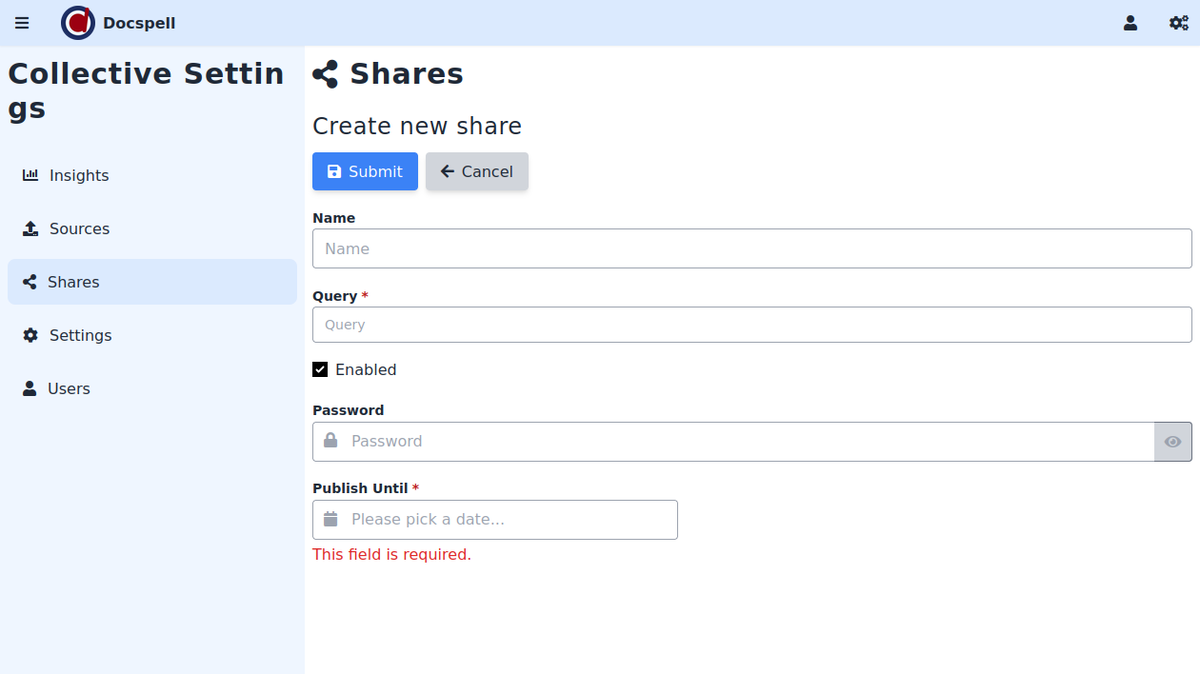
Managing Shares🔗
Go to Collective Profile -> Shares to see all the shares of your collective. You can also look into shares that were created by other users.


To not make it too easy to look into private folders, you cannot change attributes of shares that were created by another user. However, you can delete all shares. This is for now a compromise, assuming small groups that still talk to each other: All users of a collective are equal and should be able to see shares and also delete them. But since a share of another user could be used to easily look into folders where you are not a member, editing other shares is not allowed.
If you edit your own share, you can change its properties.
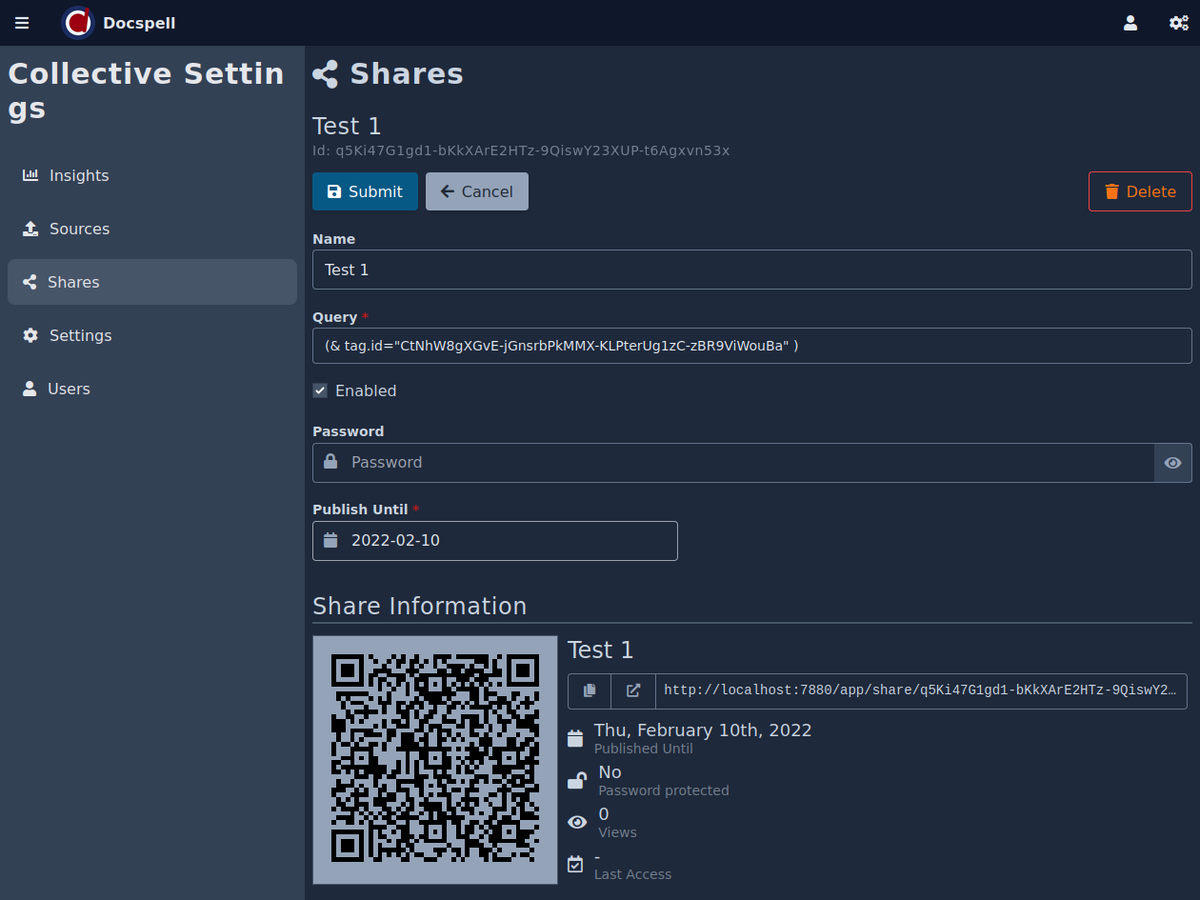
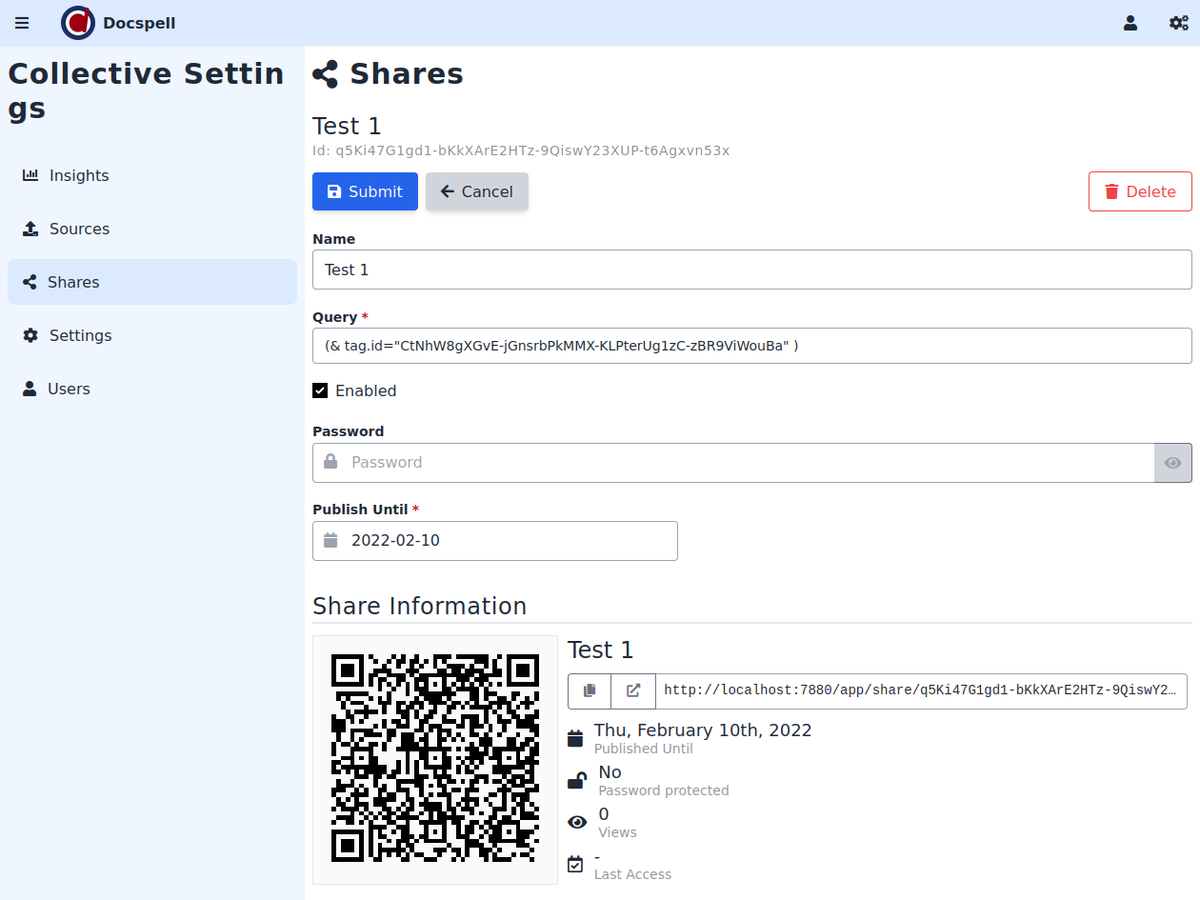
If you are not the owner, the form is hidden:

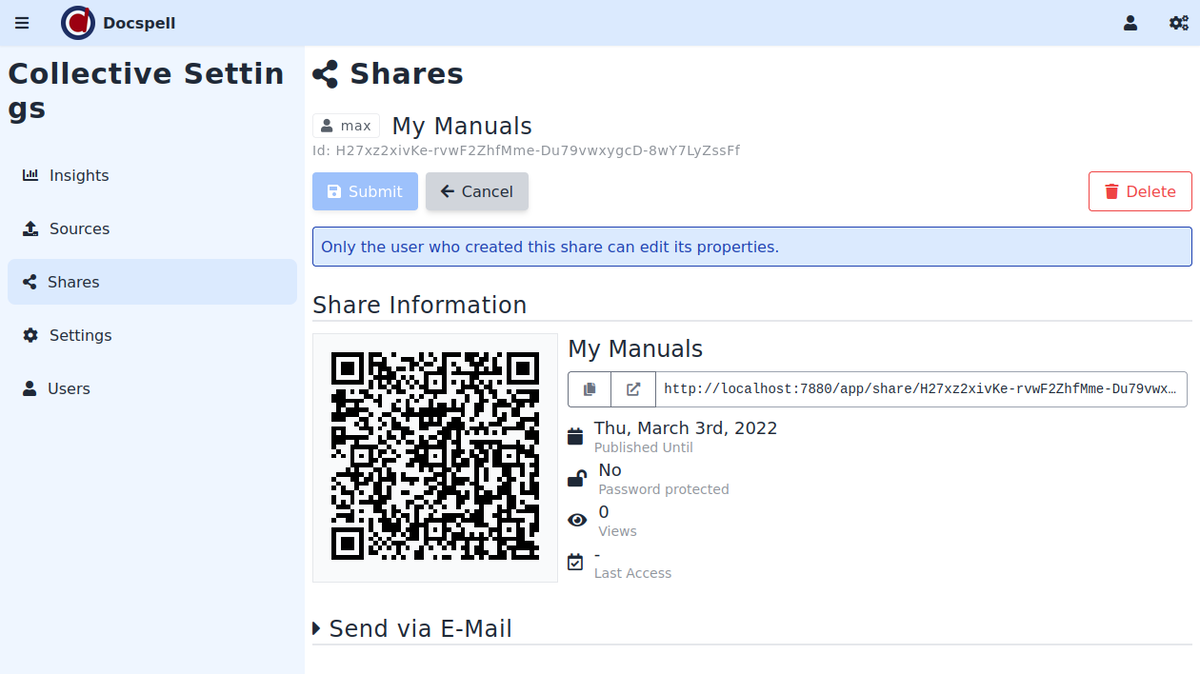
Accessing a share🔗
Pasting the share link into a browser shows you the results of the query:

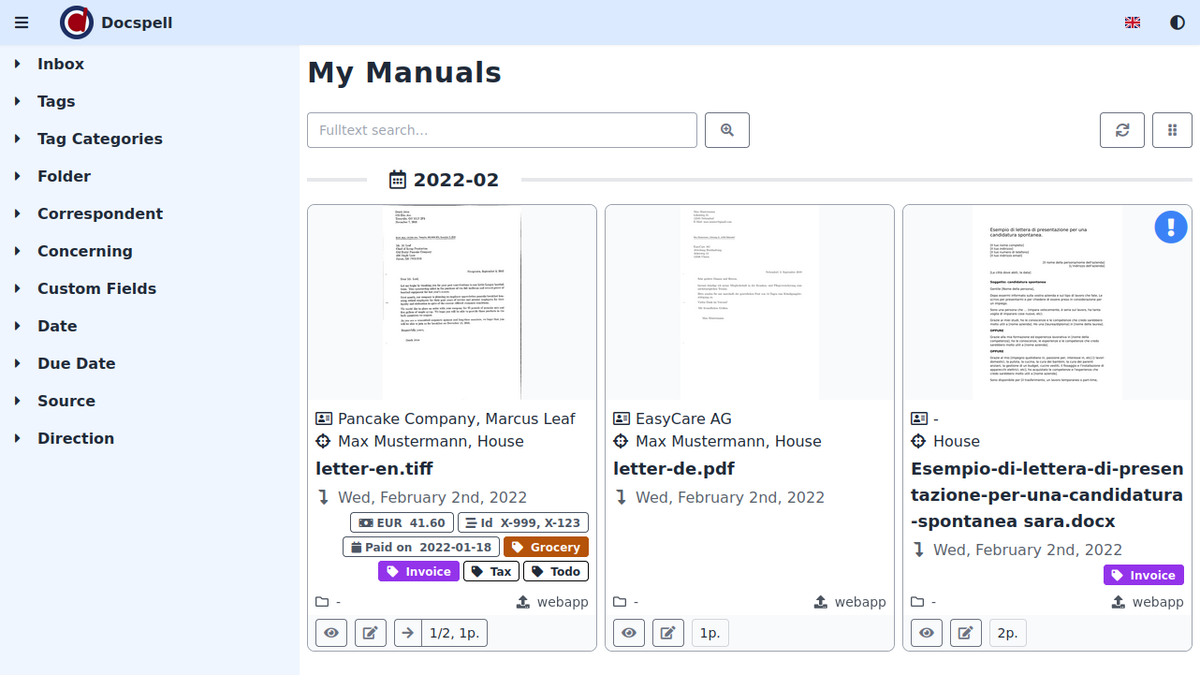
The search input allows to do a fulltext search and the search menu to the left can be used to further constrain the results. The search will be combined with the stored query, such that the results always remain within the original results of the share.
The options in the dropdown menus for correspondent, concerning etc are taken from the results. So only the data that is shared by the search results will be available to select. Other data is not leaked.
Clicking the search icon next to the search input, switches the input to be the "power search" input:


There is a link below the input field that opens a new tab with the query documentation page.
The user can click on the tags and other data in the item cards which will populate the corresponding section in the search menu, just like the default search view. You can click on an item card to go to the detail view:
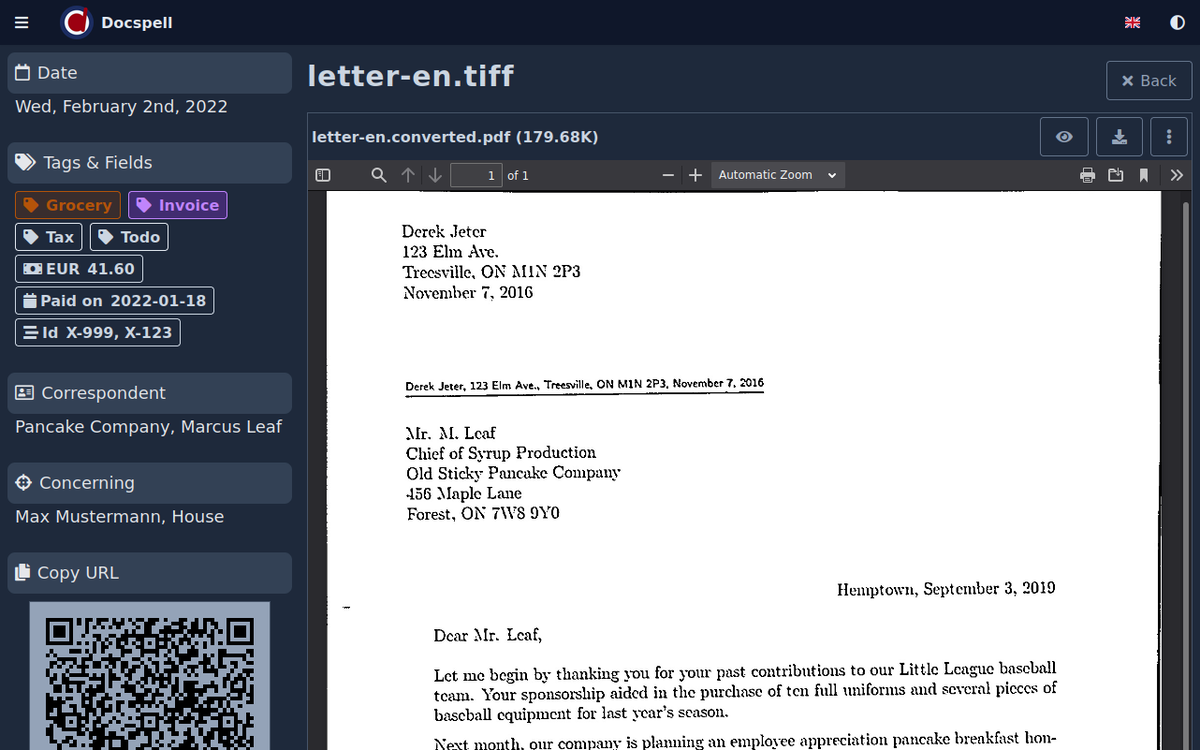
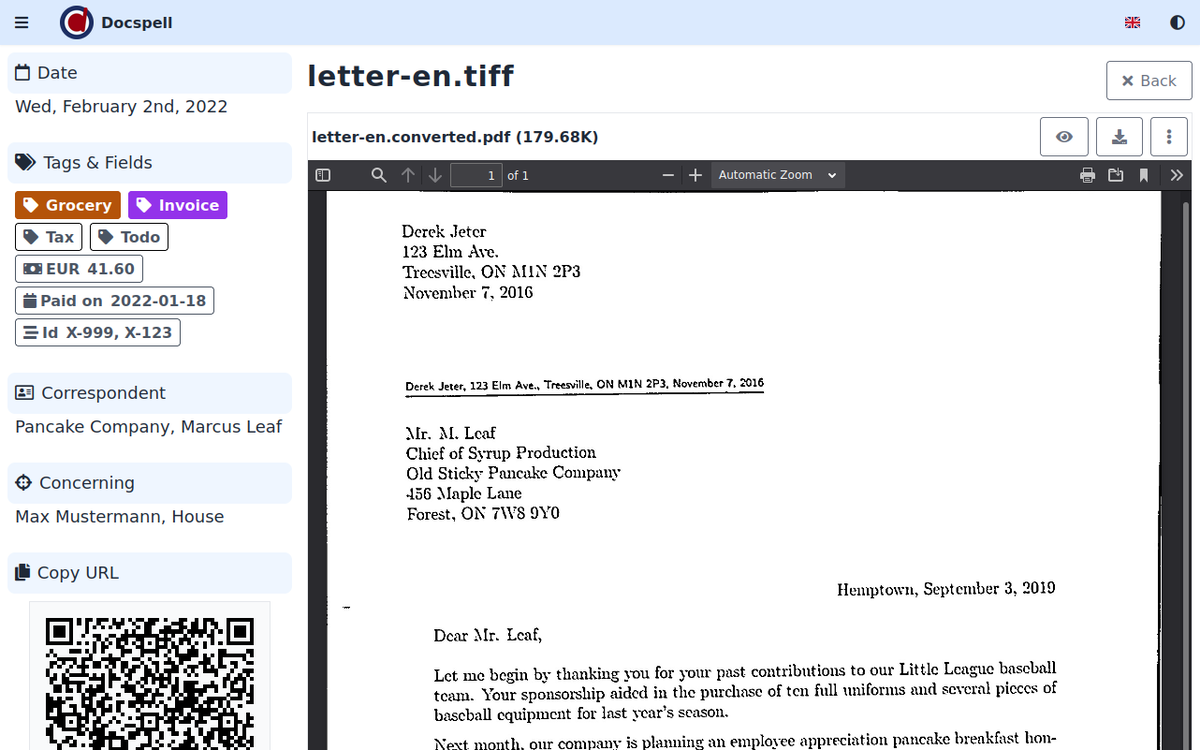
This link to a single item is also bookmarkable. You can copy it via the QR code or by clicking the Copy button. In the detail view you can select multiple attachments and download each.